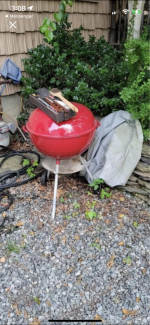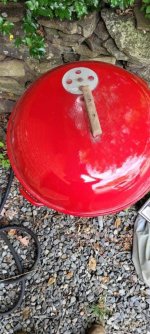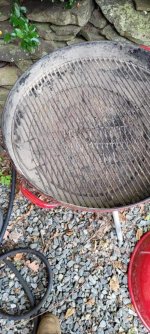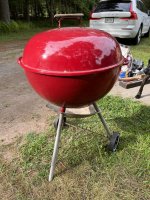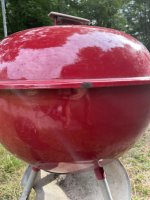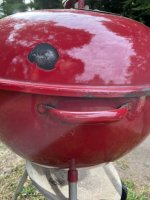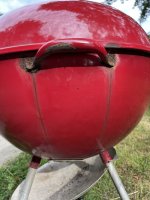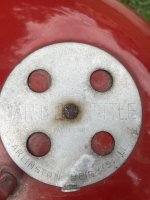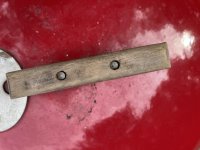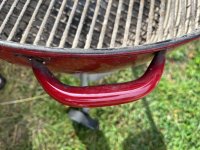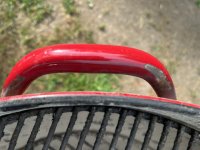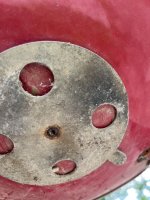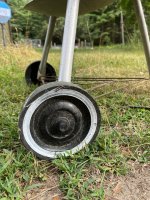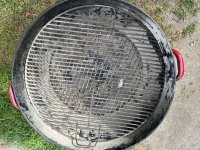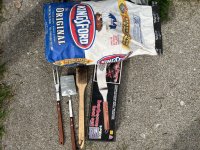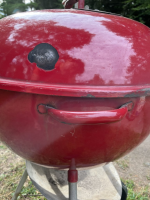That’s a real Weber kettle!

You can’t get that look and feel from a new one, even though I do like the taller Master Touch model.
There are two “belief systems” about damage like yours and most older kettles accumulate. Some say clean it up as best you can, making sure to remove rust in the bare spots and then just season with oil. The pock marks become part of the grill’s story.
Myself I don’t see a problem with mildly touching up areas with missing porcelain. You can use very high heat caliper paint and try to find the closest red you can. If the damage is deep, some people have used JB Weld ultra high heat as a kind of bondo first. Then carefully sand smooth and paint over it.
There is also a porcelain paint product on Amazon that you are supposed to be able to heat cure. I bought some in two red colors for my kettles but haven’t had time to try. I figured I might have to mix the two reds to get as close as possible. Not having used yet, I can’t say how it works.
I have used caliper red on a flip kettle. As I said in SMALL repairs I think it helps and looks better. You can’t get carried away with painting large areas in my opinion. However, I think JB Weld and one of these paint ideas could help even the larger pock mark as long as you stay within the damaged area.
Any repairs other than a complete re-porcelain coating are going to still be visible. They won’t jump out at you like black bare spots, but some feel it is like cheap makeup and would rather go with just seasoning.

